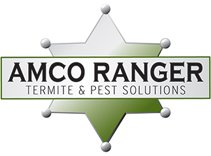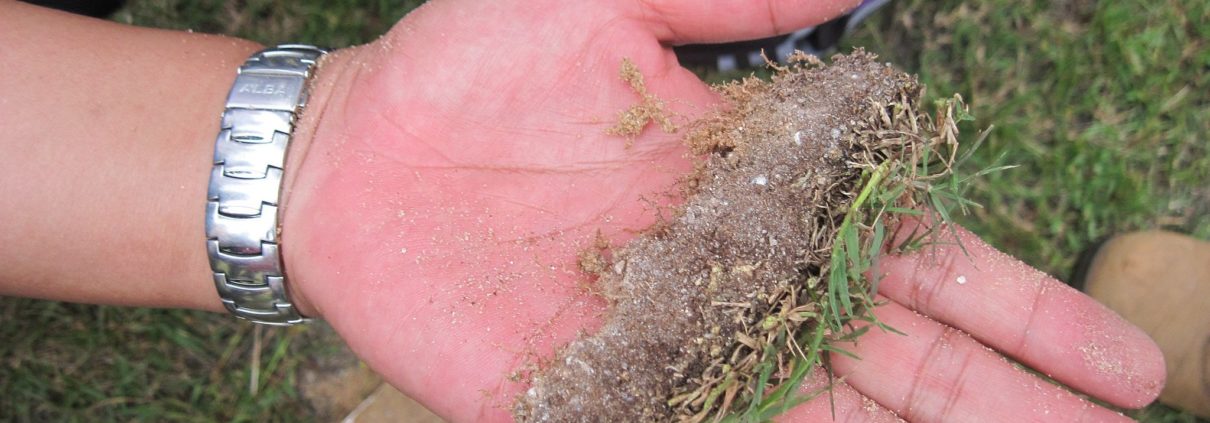Everything You Need To Know About Lawn Dethatching
What is thatch?
Thatch is a layer of living and dead organic matter that accumulates on a lawn between the grass and the soil surface. When a lawn begins to have a spongy feel to it, this can be a sign of excess thatch.
Thatch is composed of stem nodes, crowns, fibers of vascular tissues, and roots. About 25% of thatch is made from a compound called lignin. Lignin is resistant to decay by microorganisms and can cause thatch to build up faster than it can be broken down.
Is it good or bad?
Like a majority of things in life, thatch is best in moderation. A thin layer of thatch (less than ½ inch) can be beneficial for a yard, helping insulate it from extreme temperatures and foot traffic. It can also reduce weed germination by keeping weed seeds from reaching the soil and helping retain soil moisture.
Any lawn with more than an inch of thatch will start to experience problems. A thick layer can harbor pests and diseases and trap roots in the layer, subjecting them to drought and temperature extremes. Too much thatch can limit the ability of oxygen, water, insecticides, and pre-emergent herbicides to reach their intended target.
Mower scalping can also occur when there are thick layers of thatch. As the mower wheels sink into the thatch, the height of the cut is also lowered. The crowns of grass growing in thatch also tend to be elevated above the soil, making it more likely to be cut.
Causes of thatch accumulation
There are a number of factors that can lead to thatch buildup, which is when organic matter is produced faster than microorganisms can decompose it.
Depending on the species and variety of turf grass in question, certain species produce more stem tissue than others, causing them to create more thatch faster than other species. Cool-season grasses such as Kentucky bluegrass, creeping red fescue, and creeping bent grass all form thatch at an accelerated rate and even certain cultivars of these grasses are worse with accumulation than others.
Meanwhile, perennial ryegrass and tall fescue tend to not produce significant thatch buildup. Yet even if you do have a grass that typically does not have problems with thatch accumulation, aggressive fertilization with nitrogen can stimulate too much production in the stems and leaves, resulting in an overabundance of thatch.
Another element that allows thatch to build up is reduced microbe activity, which can occur in acidic soils (5.5 pH or lower) as this inhibits microorganisms from being able to decompose thatch. Compacted, clay, or sandy soils can also lack the needed population sizes of microorganisms to keep thatch under control.
Pesticides that reduce microorganism or earthworm activity can also decrease thatch breakdown. Overgrown grass, excessive watering, and lack of aerationare all contributors that can lead to unhealthy amounts of thatch.
Preventing thatch
The best control for thatch is to have a good management program in place, to avoid the most common causes of overly thick thatch. Taking soil tests regularly can alert you to any changes in the pH that would cause microbial activity to drop, while core aeration alleviates soil compaction and boosts microorganisms’ activity.
Applying fertilizer in controlled amounts that do not cause rapid growth and only using pesticides when they are needed can also improve the rate of thatch breakdown.
Removing thatch
If your thatch is already thicker than one inch, preventative practices are not going to be able to control the problem. Thatch can be removed with rakes, a vertical mower, or a dethatching mower, depending on the thickness of the thatch.
Dethatching is a stressful process for the turf, so it should be conducted when the grass is actively growing and the soil is moderately moist. Early spring or early fall is the best time for cool-season grasses, while late spring through early summer for warm-season grasses.
We do lawn care
Did you know that Amco Ranger does lawn care in addition to pest control? We give these services the same professional attention to detail as our pest control services and offer a 100% satisfaction guarantee. Give us a call today to ensure a lush-looking lawn this spring.



